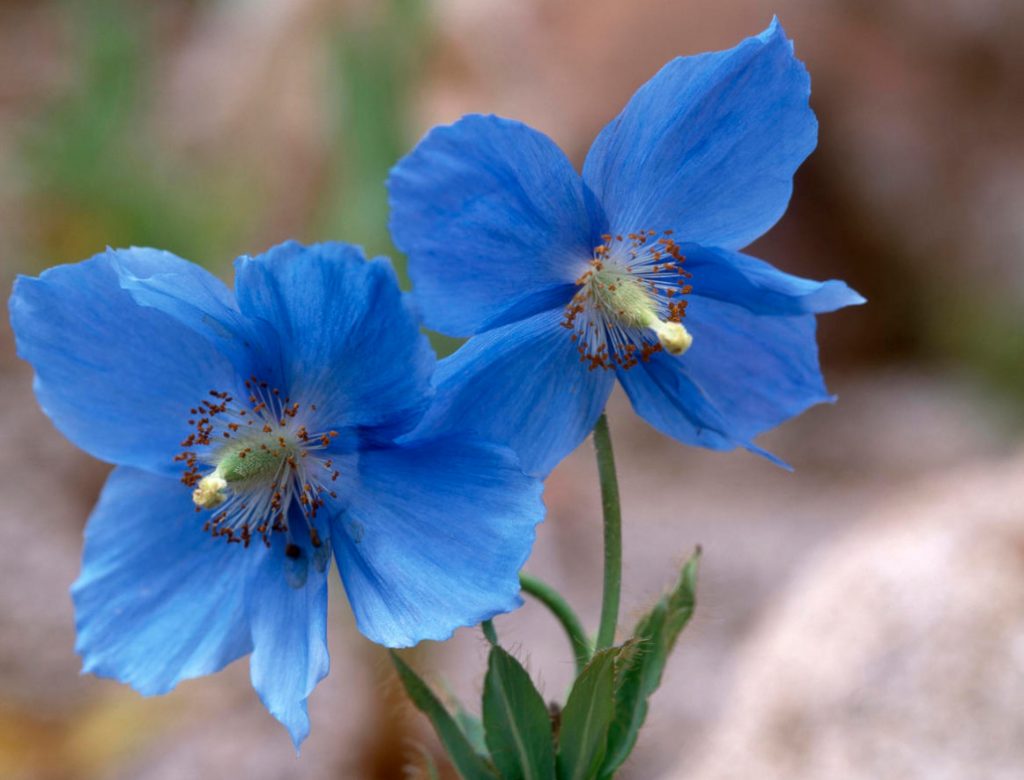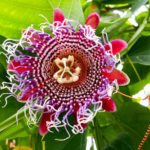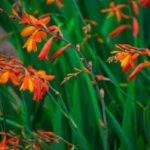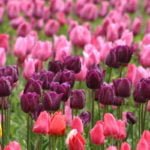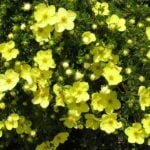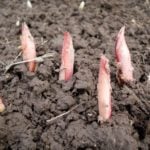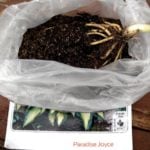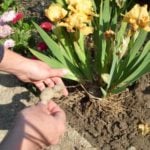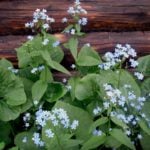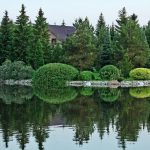Meconopsis is not often seen on the plots, but flower rarities persist in winning a place in the sun in our flower beds. They are related to poppies — both belong to the Papaveraceae family.
Externally, meconopsis are very similar to poppies (especially-silky flowers), and this is reflected in the Latin name of the genus: Meconopsis, derived from the ancient Greek mecon (“poppy”) and opsis (“similarity”). But it is very easy to distinguish them: Papaver does not have blue flowers, and meconopsis species flaunt a variety of colors.
By the way, meconopsis — a godsend for the true connoisseurs of poppies: the last allowed to grow in suburban areas.
From a Botanical point of view, the main differences between poppies and meconopsis are in the structure of the pistil and fruit:
- poppies have a pestle with a sessile stigma, fruits-dry boxes of a rounded shape; and meconopsis pestle standard consists of an ovary, column and stigma, fruits-dry boxes pod-shaped;
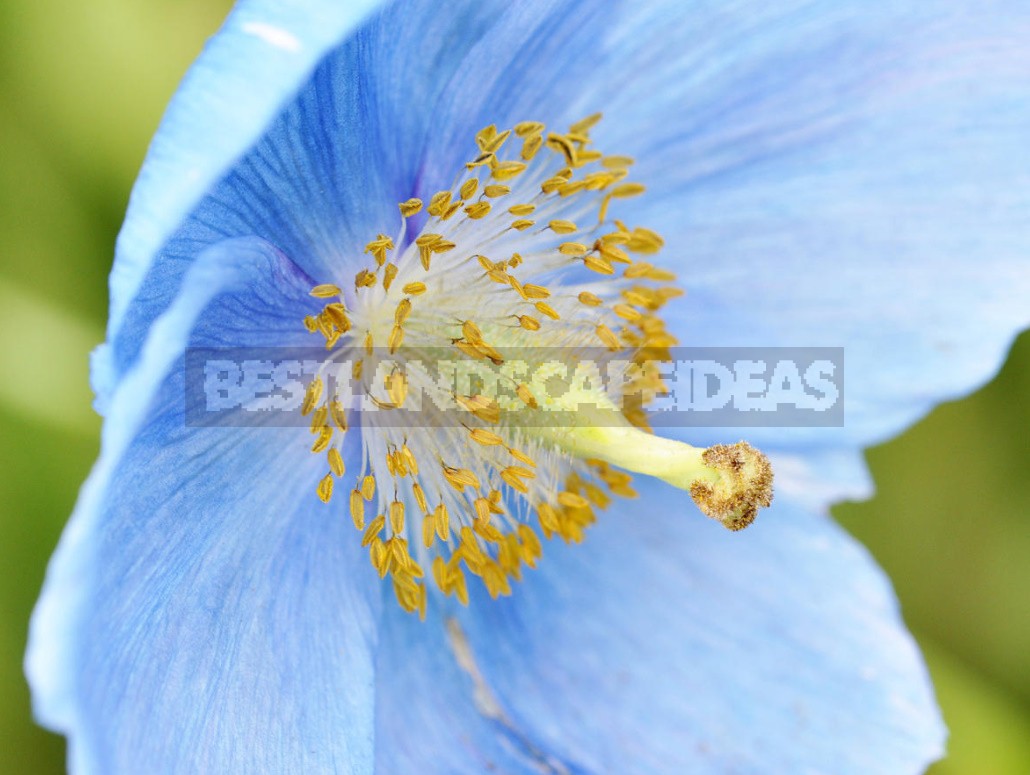
- also, differences can be noticed in the leaves — in meconopsis they are more often whole-edged, sometimes striated, oblong; in most poppies-thinly pinnate.
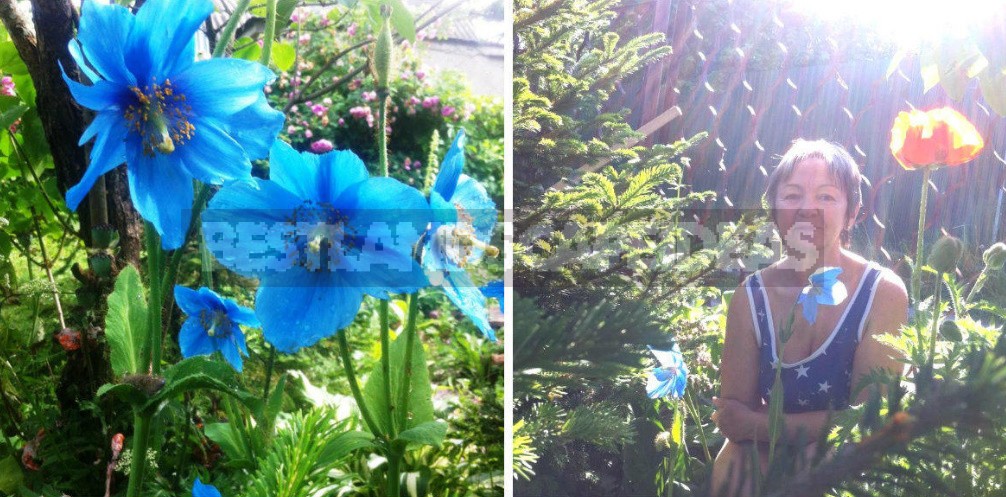
Mostly meconopsis is maloletnice, some types — monocarpic, dying after flowering. These are rosette and semi-rosette plants, often winter-green, going under the snow with leaves. Flowers are regular, large, often single, less often – in inflorescences (racemes, panicles).
Main species with blue flowers
It is in them as if some incomprehensible secret is hidden. These are surprisingly elegant and beautiful plants that create a cool color scheme in the flower garden.
Meconopsis betonicifolia
Its species name is derived from the similarity of the oblong, toothed leaves with Betonica leaves. It is native to Tibet, Southwestern China, and Burma. It is called the Himalayan or Tibetan blue poppy.
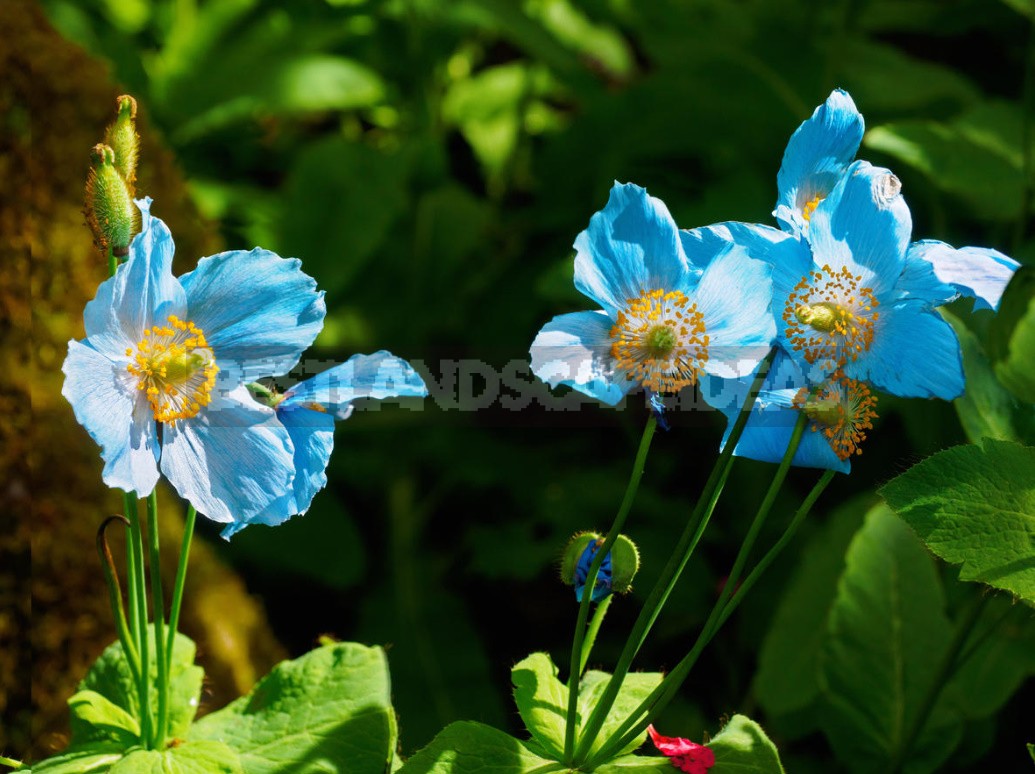
Deciduous rosette short-lived perennial up to 1.2 m tall and about 45 cm wide. The leaves are oblong or oval, slightly bluish, 15-30 cm long, with a truncated or heart-shaped base. Rosette (lower) petioles, middle-semi-stem-enclosing, 3-4 upper leaves-whorled. Leaves and peduncles are covered with reddish bristles. Long, up to 20 cm, flower stalks are crowned by large (8-10 cm in diameter) saucer-shaped flowers, which can be from white and sky-blue to pink-lavender and purple. They bloom in June.
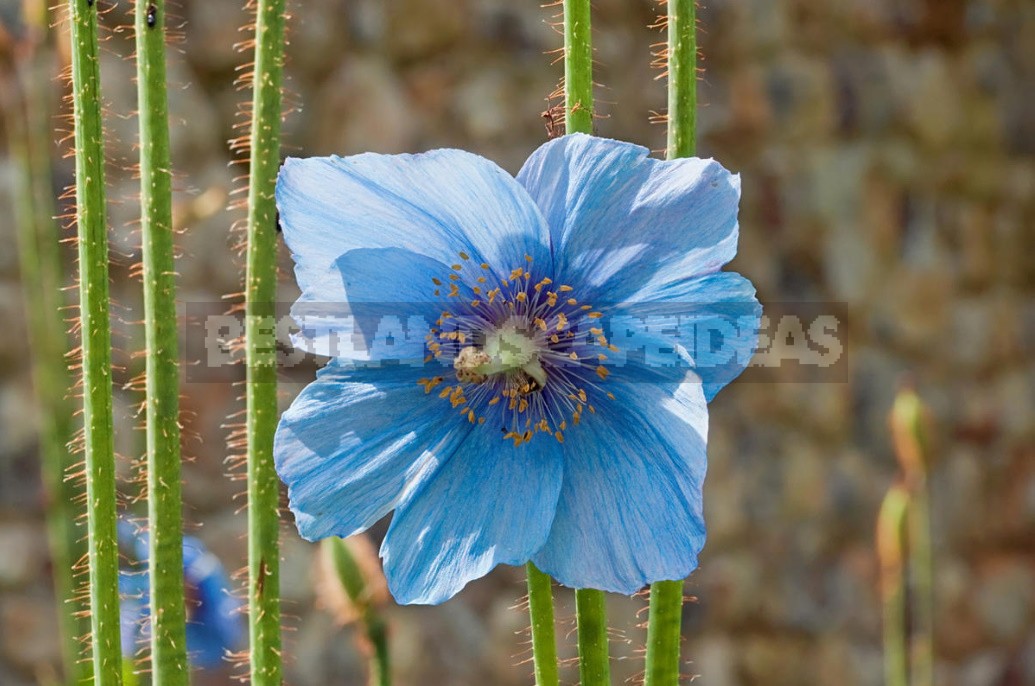
The flowers are decorated with numerous bright yellow stamens that stand out in relief in the center.
Meconopsis grandis
It is native to Eastern Tibet, Eastern Nepal, and Bhutan.
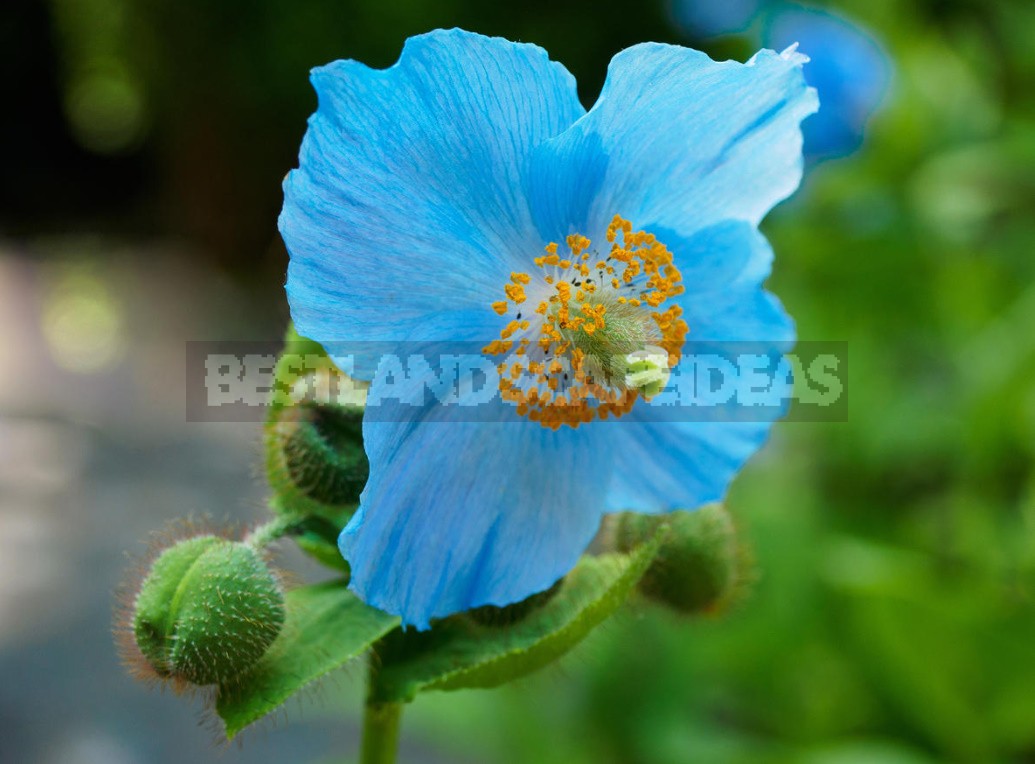
This is a pillow-shaped semi-rosette perennial 1-1. 2 m high and up to 60 cm wide. Leaves with sparse reddish bristles, 15-25 cm long, from lanceolate to elliptic, conical at the base. Flowers are blue, purple, purple-purple, rarely pink-purple, 12-15 cm in diameter, on elegant, bristle-covered peduncles, up to 40 cm long. In dry conditions, it is a monocarpic.
Meconopsis x sheldonii
It is a hybrid of M. betonicifolia and M. grandis.
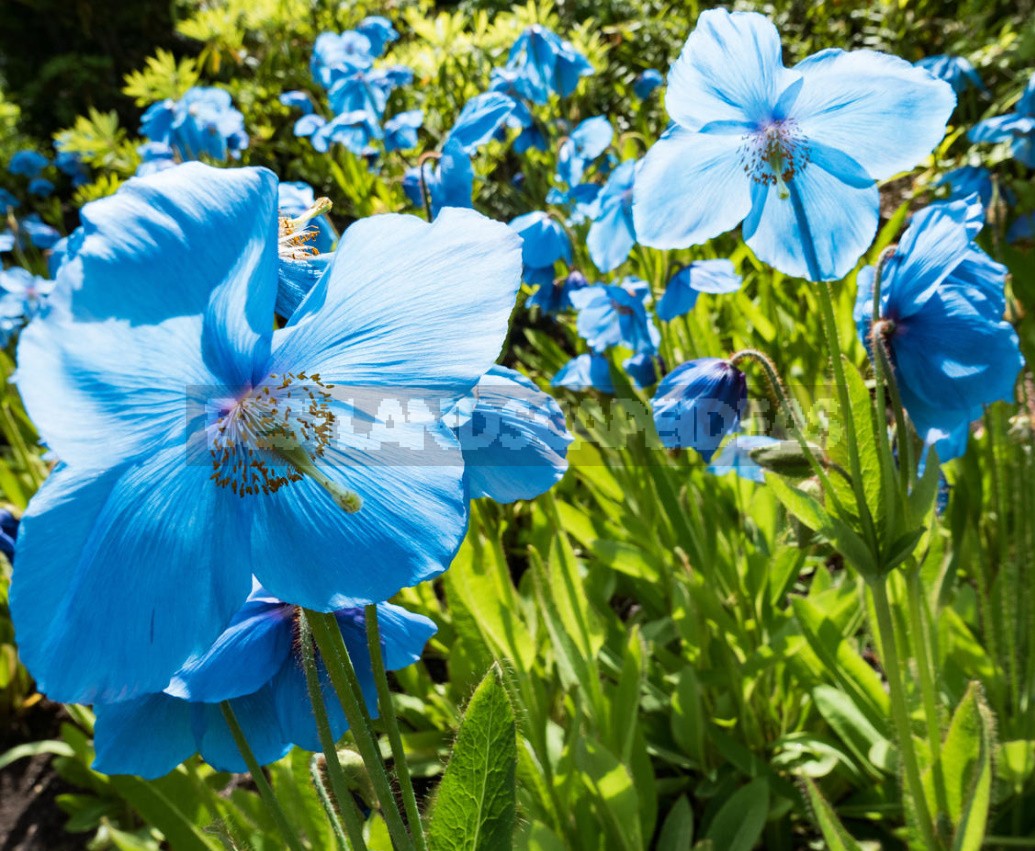
Rosette perennial 1.2-1.5 m high and 60 cm wide. Leaves are 15-30 cm long, from elliptic-oblong to lanceolate. Blue flowers, 6-10 cm in diameter, on peduncles 20-50 cm long; bloom in late spring or early summer. Most of its varieties are sterile (the exception is the ‘Lingholm’ variety, which produces viable seeds) and propagate only vegetatively.
Meconopsis horridula
This blue wonder is also from Western Nepal, South-Eastern Tibet, and China. The species in culture is even more rare and capricious than the other meconopsis.
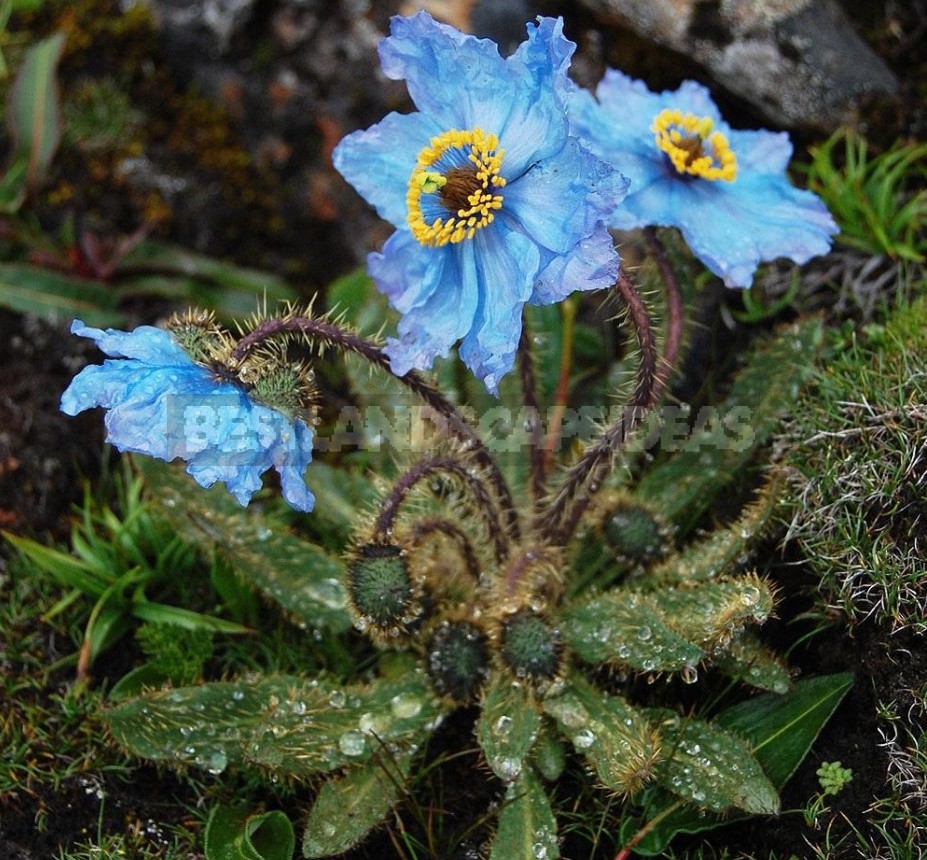
It is a deciduous monocarpic 20-90 cm high and 45 cm wide. Rosette leaves up to 25 cm long. Leaves and peduncles are covered with yellowish or dark red sharp bristles. Flowers from deep blue to reddish-blue, 5-8 cm in diameter, on peduncles up to 15 cm, drooping.
Meconopsis cambrica
In contrast to the blue poppies stands Golden meconopsis Cambrian.
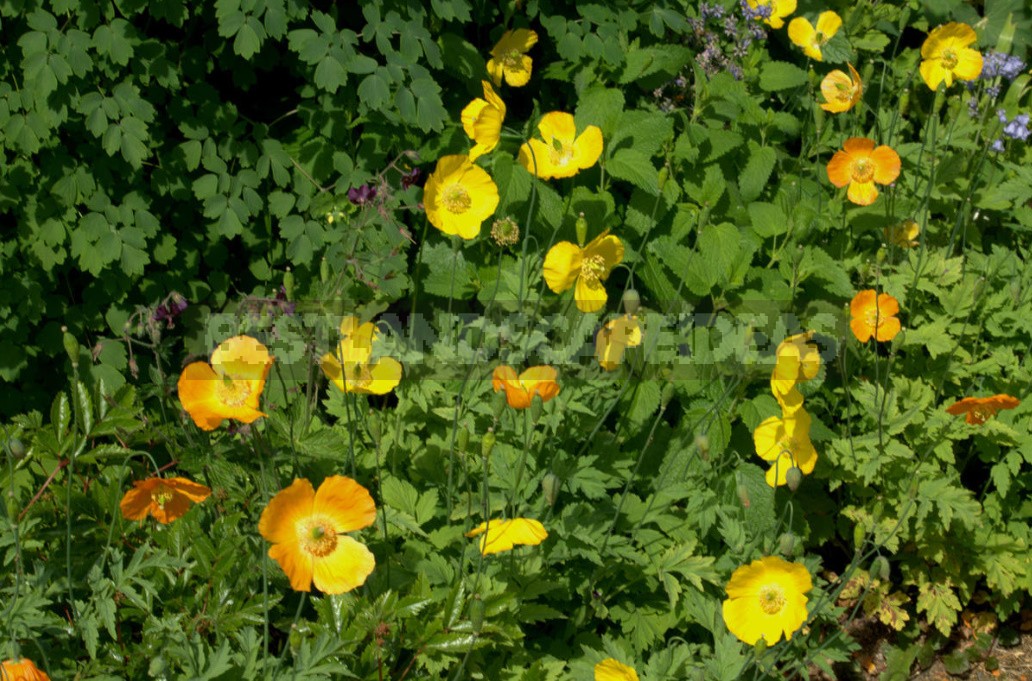
Golden beauty-the only European species similar to Eschscholzia californica; Glaucium flavum.
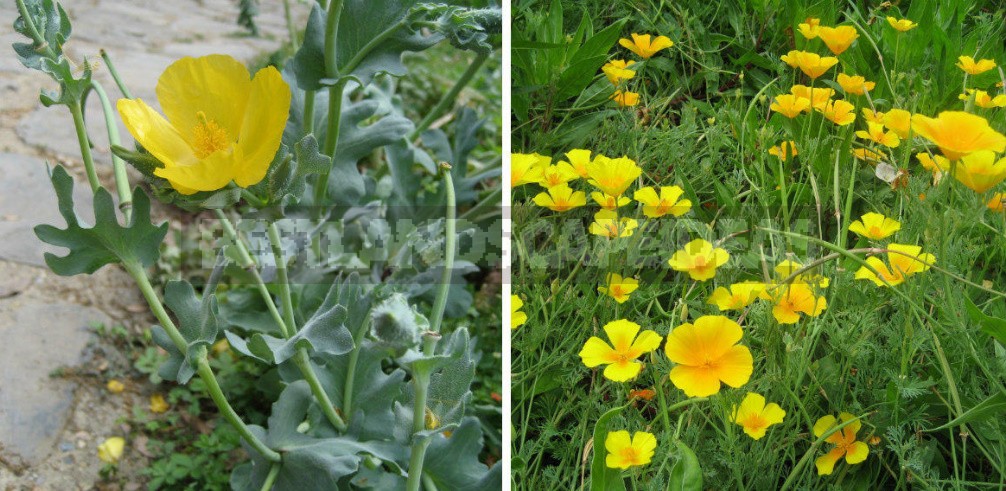
Meconopsis cambrica is native to Western Europe, where it grows in semi-shady and humid places. It is 45 cm high and 25 cm wide. Leaves are pinnate, up to 20 cm long. Flowers are yellow, orange (var. aurantiaca), there are Terry (‘Flore Pleno’), 4-5 cm in diameter, on peduncles 25 cm long. Blooms from June to frost.
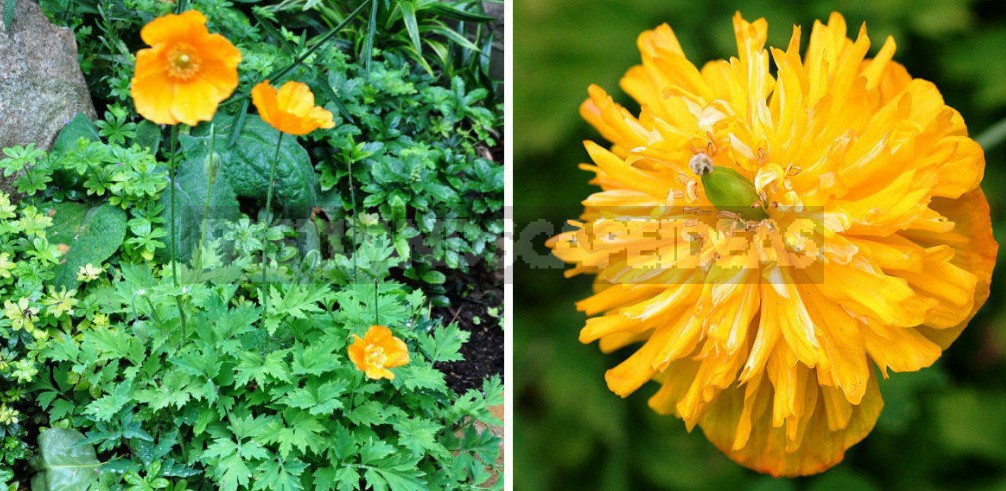
How to grow meconopsis in the cottage
At first glance, it seems that without “dancing with tambourines” to see blooming meconopsis in your flower garden is impossible. In fact, it’s not all that complicated. Let’s take a look at the process of growing blue poppies from seed to compositions in flower beds.
Features of seeds and nuances of sowing
Seed characteristics: very fine, like dust.
Seeding features: superficial, rarely.
Optimum time of sowing: there are two terms:
- in the autumn, in the wiring box of a cold greenhouse, lightly sprinkled with sand;
- in winter (in January or February) for seedlings.
Soil substrate: not very acidic peat, leaf humus, sand and turf in a ratio of 1:1:1: 1.
Stratification: carefully water from a spray bottle, cover with glass or plastic bag, leave it in the room for a day, then put it in the refrigerator for 2-3 weeks.
Placement of crops after stratification: in early February, we place them in a bright place with a temperature of + 12 … 14°C.
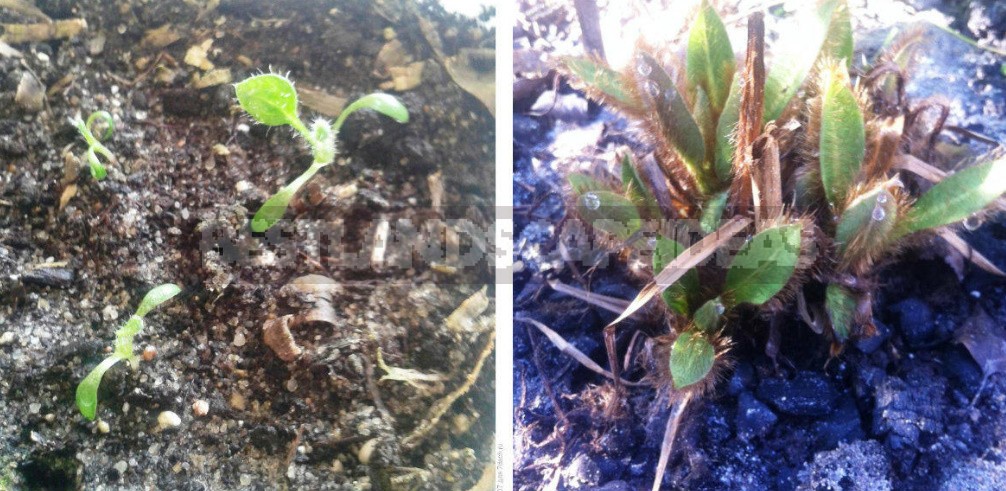
What gives stratification: the period of emergence of seedlings is reduced from 3-6 to 2-3 weeks. Seedlings from fresh seeds germinate together, and from stored for more than 1 year (under normal conditions, without hermetic packaging) practically do not germinate. Practical suggestion: when seedlings appear, the glass is not immediately removed, but gradually accustom the seedlings to the dry air of the room.
Picking: carried out in the cotyledon phase, 14-20 days after the emergence of seedlings. Practical suggestion: picking can speed up the appearance of a black leg, so it is very important to shed the soil substrate with a pink solution of potassium permanganate a day before sowing.
Watering: only as the drying of the soil substrate.
Planting in the open ground
In the open ground, especially in flower beds located in semi-shady places, meconopsis is not in a hurry to plant. If the seedlings are too small and weak, then as carefully as possible transfer to a larger pot with the preservation of the earthen coma (they do not tolerate transplanting), and plant in the flower garden in August-September. Until this moment, pots with meconopsis are better placed in the penumbra of shrubs, not forgetting to water regularly.
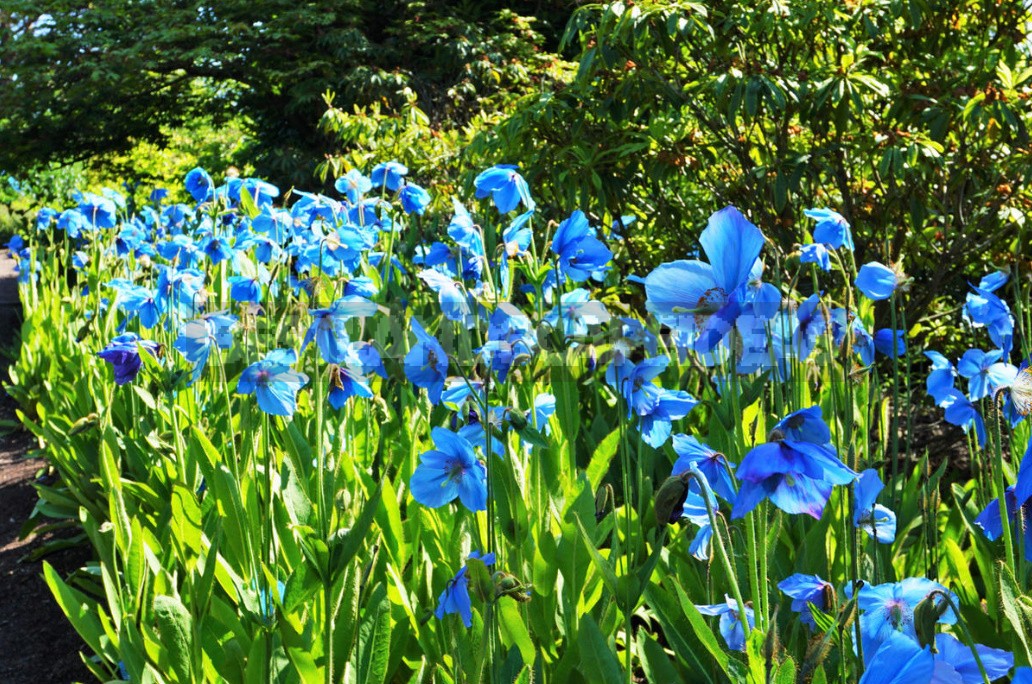
The nuances of care
Meconopsis will only grow well if you give them enough space, so try to keep a distance of 30-45 cm between the plants. The soil is preferably fertile, but poor in lime. Care consists in destroying weeds, loosening the soil, feeding with a weak solution of full mineral fertilizer. In a dry summer, you can’t do without regular watering. Often seedlings bloom on the 2-3 th year.
From pests problems can deliver aphids, so against them carry out timely treatment with insecticides.
Meconopsis hardy: in foreign reference literature, their winter temperature minimum is given at -15°C; in the 1st year of planting, cover with dry leaves.
Placement in the cottage
Very well meconopsis will be combined with species and varieties with flowers of pink, purple, crimson, white colors. Ideal partners in landscape mixborders for them will be rhododendrons. Meconopsis will look no less luxurious against the background of openwork leaves of ferns, will make spectacular duets with dicentra beautiful, decorative bows, Pieris, Kalmia and others.
Have you tried growing meconopsis?
